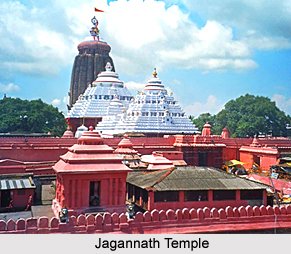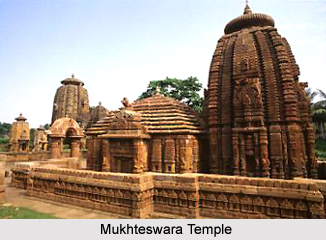 The monuments of Odisha are major tourist attractions and these were constructed between 7th century and 13th century AD. The major architectures of these monuments flourished under the regime of Ganga dynasty which was beautifully crafted. Even today these monuments of Odisha reflect the splendid beauty and artistic excellence. Each and every monument of Odisha has its own history and tradition.
The monuments of Odisha are major tourist attractions and these were constructed between 7th century and 13th century AD. The major architectures of these monuments flourished under the regime of Ganga dynasty which was beautifully crafted. Even today these monuments of Odisha reflect the splendid beauty and artistic excellence. Each and every monument of Odisha has its own history and tradition.
Most of the monuments in Odisha are huge temple compounds devoted to a particular deity. These were constructed in a typical style of Odisha that have a "rekha deul" or rounded spire located on a square base and a "garbagriha". These spires are designed and decorated wonderfully by intricate sculptures.
Basically, the religious monuments of Odisha had separate square shaped terraces for devotees. These are known as `Jagamohana`. The major features of the temple of Odisha are lion gates, carvings on the temple walls and the pyramidal roof of jagamohana. In the period of the Ganga dynasty, several other monuments were also constructed in Odisha that reflected the principles of the Kalinga School of architecture. Many monuments of Odisha originated from the Tantric influence, Jain influence and Buddhist influence. Thus a variety of architectural styles are visible in this East Indian state.
Some important monuments of Odisha
Here is a brief illustration of some of the historically significant monuments of Odisha.
Puri Jagannath Temple
Jagannath Temple is one of the most sacred temples among the Hindus and a famous tourist destination in India. It was constructed by the king Chodagangadeva of Ganga dynasty in the twelfth century. It is 214 feet long with a huge compound surrounded by a 20 foot wall. Inside the temple, Lord Jagannath, his brother Balbhadra and sister Subhadra are present as the central temple deity. The magnificent tower, its wonderful architecture and the fascinating form of the images makes the Jagannath temple unique in the world.
Konark Temple
One of the major monuments of Odisha is the Sun Temple at Konark. It was constructed in the thirteenth century by the King Narasimhadeva. The structure of the temple was planned in the shape of a chariot carrying God Sun or Surya. It is an amazing construction in a typical Odishan architectural style and hence, it is a prominent tourist destination.
Lingaraja Temple
Lingaraja Temple is a popular tourist spot in Odisha. It was constructed in the eleventh century at Bhubaneswar. The temple structure comprises the `natamandira` and `bhoga mandapa` along with its porch and a huge deul of height180 feet. Inside the temple there are 150 shrines along with the Lingaraja complex.
Dhauli
Dhauli is famous for its small rock cut caves during Ashokan period in 260 BC. Peace Pagoda or Shanti Stupa, Saddharma Vihar, a Buddhist monastery of 19th century, and several temples of early medieval period are to be found here.
Udaygiri Caves
The largest Buddhist monument is present at Udaygiri in Jajpur district in Odisha. It is a brick stupa with a number of Buddhist sculptures, stepped stone well and two other brick monasteries flourished between 7th and 12th centuries AD. This Buddhist monument consists of attractive Bodhisattva and Dhyani Buddha figures.
 Khandagiri Caves
Khandagiri Caves
One of the famous Jain monuments of Odisha are the rock cut caves of Khandagiri, present 7km west of Bhubaneswar city. The 15 caves of Khandagiri were carved and tunneled into multi storied residence for Jain monks. These caves were constructed under the King Kharavela, the first ruler of Odisha, in the first century BC.
Barbati Fort
Barbati Fort in Cuttack is a well known for the carved gateway. It is a 14th-century fort built during the Ganga dynasty. Situated on the river Mahanadi, the fort is a famous historical place in Odisha. The fort is situated on the earthen mound of the 9 storied palaces. The monument was built with fortification to protect from enemy attacks.
Chausath Yogini Temple
Located near the mesmerizing River Narmada, Chausath Yogini Temple is a 10th-century ancient temple that resembles the temple in Khajuraho. It was built during the Kalachuri Kingdom. The presiding deity is Goddess Durga. The temple followed the Yogini culture in India when 64 Yoginis used to reside in the temple.
Apart from these monuments, Odisha has numerous remains of monuments at other locations also. They are Mukhteswara temple, Brahmeshwara Temple, Ananta Vasudeva Temple, and Lalitgiri. These monuments had a rich history dating back to 2000 BC which represent Odisha as a melting pot of many cultures in its ancient period.



















